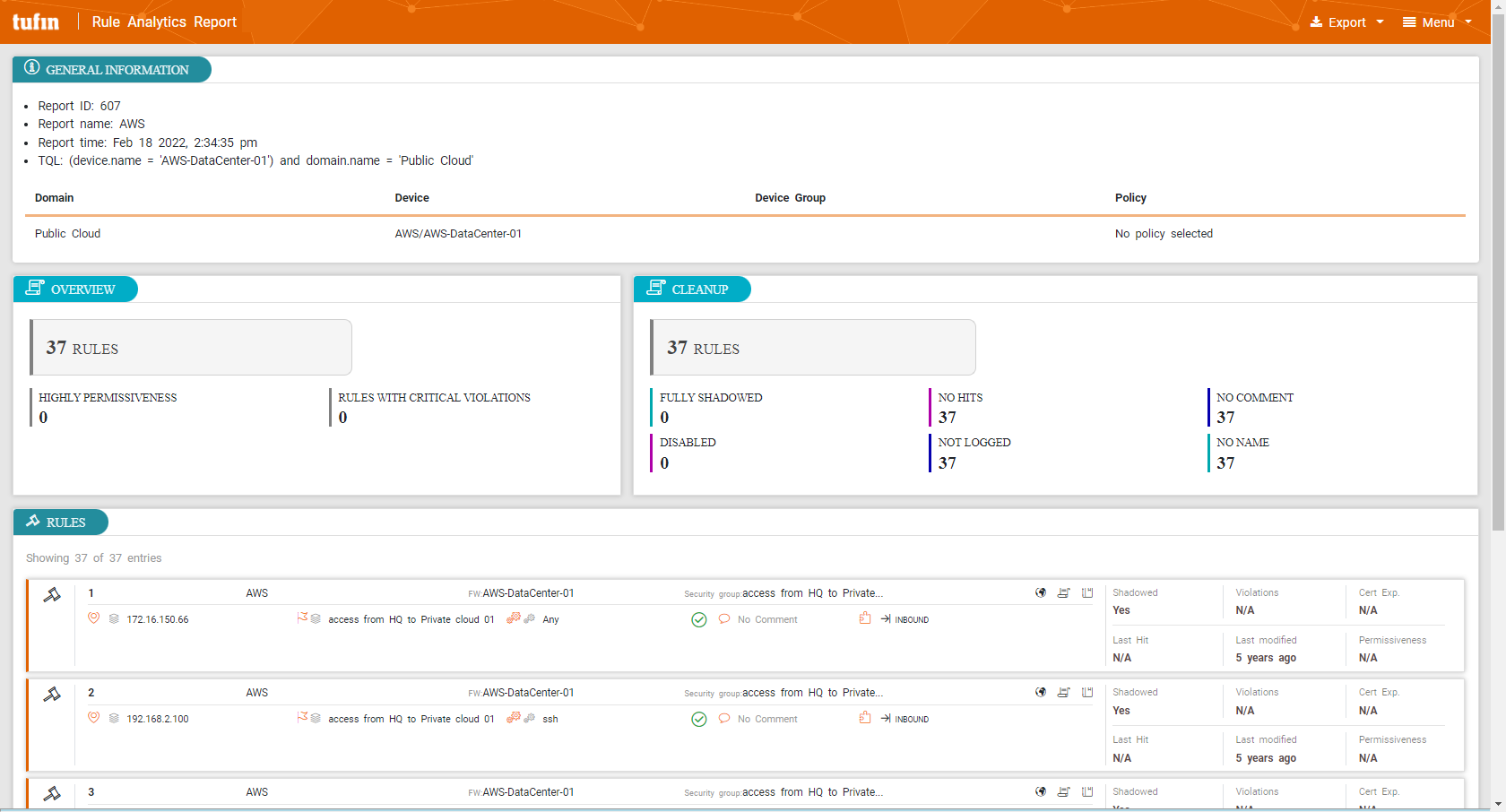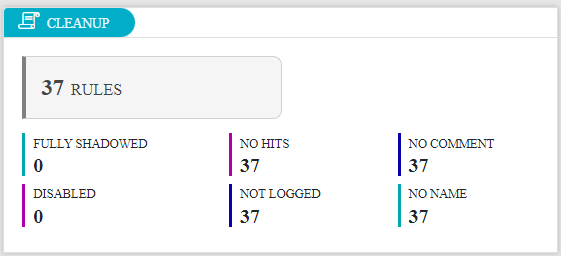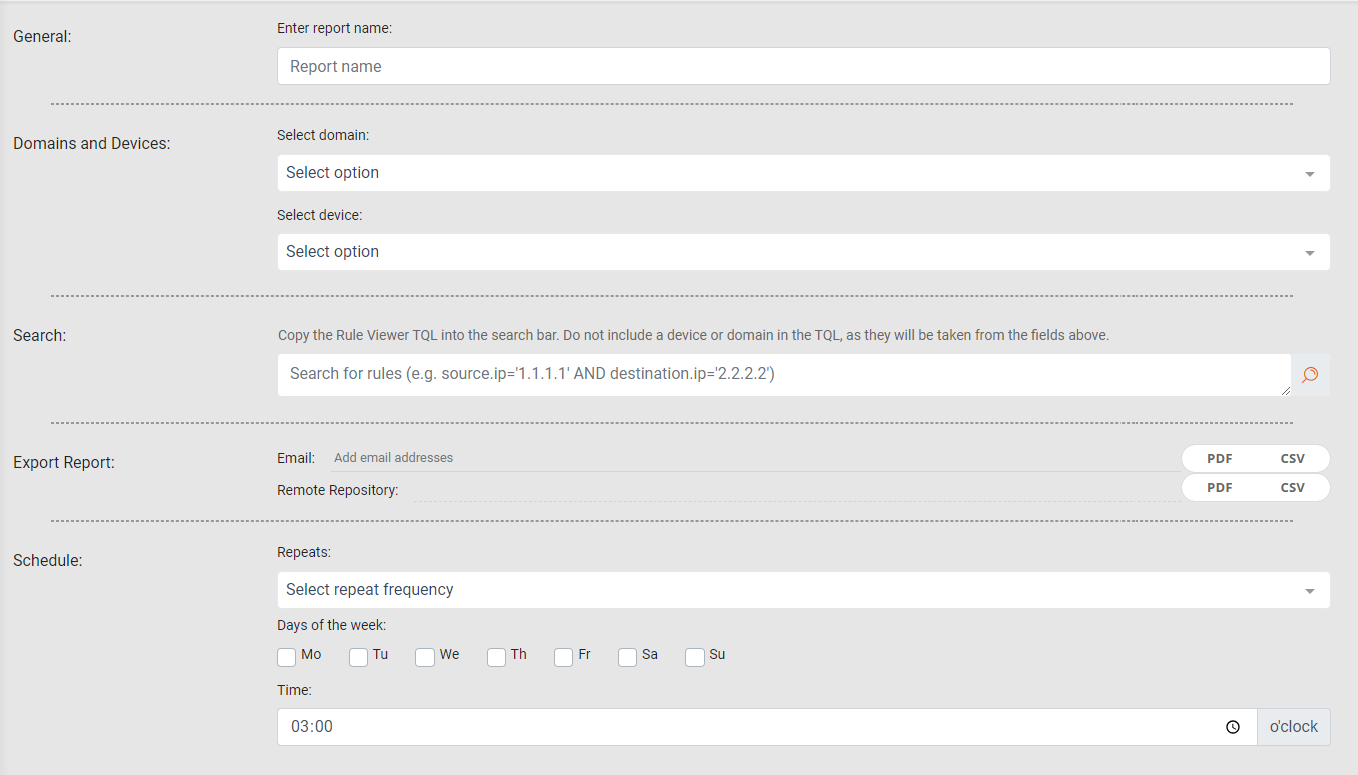On This Page
Rule Analytics Report
Overview
The Rule Analytics report displays rules and rule KPIs based on the search and the selected device. The search feature uses the SecureTrack Rule Viewer TQL that you paste into the report.
What Can I See Here?
General Information
The General Information section includes details such as the report ID, name, time, and the TQL string.
Overview
This section shows the total number of rules with permissiveness and critical violations metrics.
Cleanup
This section shows the total number of rules with metrics such as Fully Shadowed, No Comment, and No Hits.
Rules
The rule cards show all information for rules resulting from the TQL search.
Create a Rule Analytics Report
Prerequisites
-
In the Settings > General page, the administrator must configure the outgoing SMTP server and the remote repository.
Procedure
-
From the Create (
 ) menu, click Rule Analytics.
) menu, click Rule Analytics.The Setup page for the report appears.
-
Complete the report fields:
-
General: Report name.
-
Domains and Devices: Select a domain and one or more devices or device groups.
-
Search: Copy the Rule Viewer TQL into the search bar. Do not include a device or domain in the TQL, as they will be taken from Domains and Devices fields.
-
PDF Settings: By default only the first level rules in groups are included in the PDF output. Select Include nested groups and include all members to ensure the PDF includes nested group members. Once enabled, the PDF report will include two layers of group members: parent group members and child group members. Only 100 objects, or group members, per group will display in the PDF report.
-
Export To Email: Specify the recipients for notification emails. Press Tab or Enter to separate multiple email addresses. Specify the report format - PDF or CSV.
-
Export to Remote Repository: STRE can export reports using SFTP. Specify the report format - PDF or CSV.
If the report finished successfully, you can verify that the new files appear in the Reports Folder path, in the remote repository, configured by your administrator (see Send Reports Using SFTP).
- Schedule: Configure the following:
- Repeats: Select the frequency by which the report should run. Options include Daily, Weekly, and Monthly.
- Days of the week: Select one or more days on which the report should run.
- Time: Indicate the time at which the report should run.
-
When scheduling a report to run on a monthly basis, you must choose a single Day of the week value. For whichever weekday you choose (Mon, Tues, Wed, etc.) the report will run on the first of that day every month. Keep in mind, this may not correlate with the first calendar day of that month.
-
-
Click one of the following:
 : Saves the report. The Saved menu lists all saved and scheduled reports.
: Saves the report. The Saved menu lists all saved and scheduled reports. : Runs the report. After a report runs, you can view the results in the Repo menu.
: Runs the report. After a report runs, you can view the results in the Repo menu.
Available Report Formats
When viewing the report output, use the Export menu to save the report data.
You can save the data for this report as a CSV file or PDF output file.
-
The CSV export option is useful when you want to create your own reports based on the specific data from the report configuration.
-
When you select PDF, check the Export menu again for the PDF is ready status and click the link to view the PDF output. The PDF report is exported as a ZIP file. This report output is divided into segments of 250 rules, with a maximum of 6000 rules per report. To increase the limit, contact Tufin Support.






